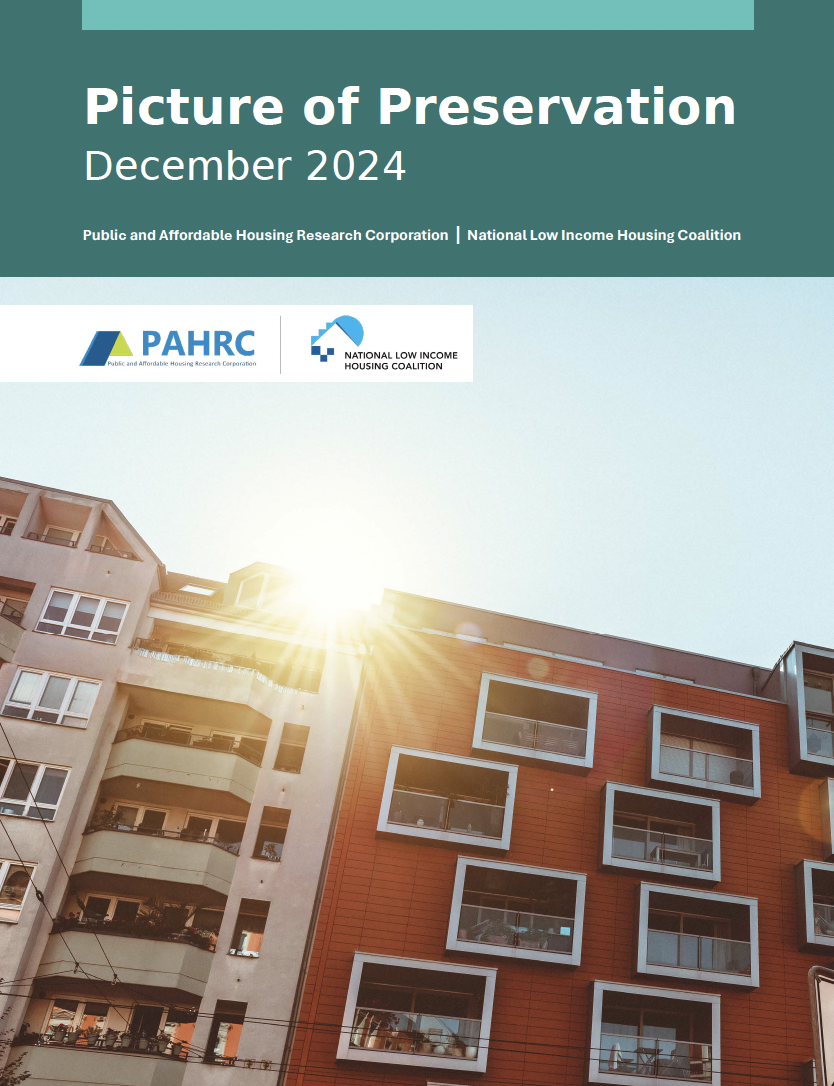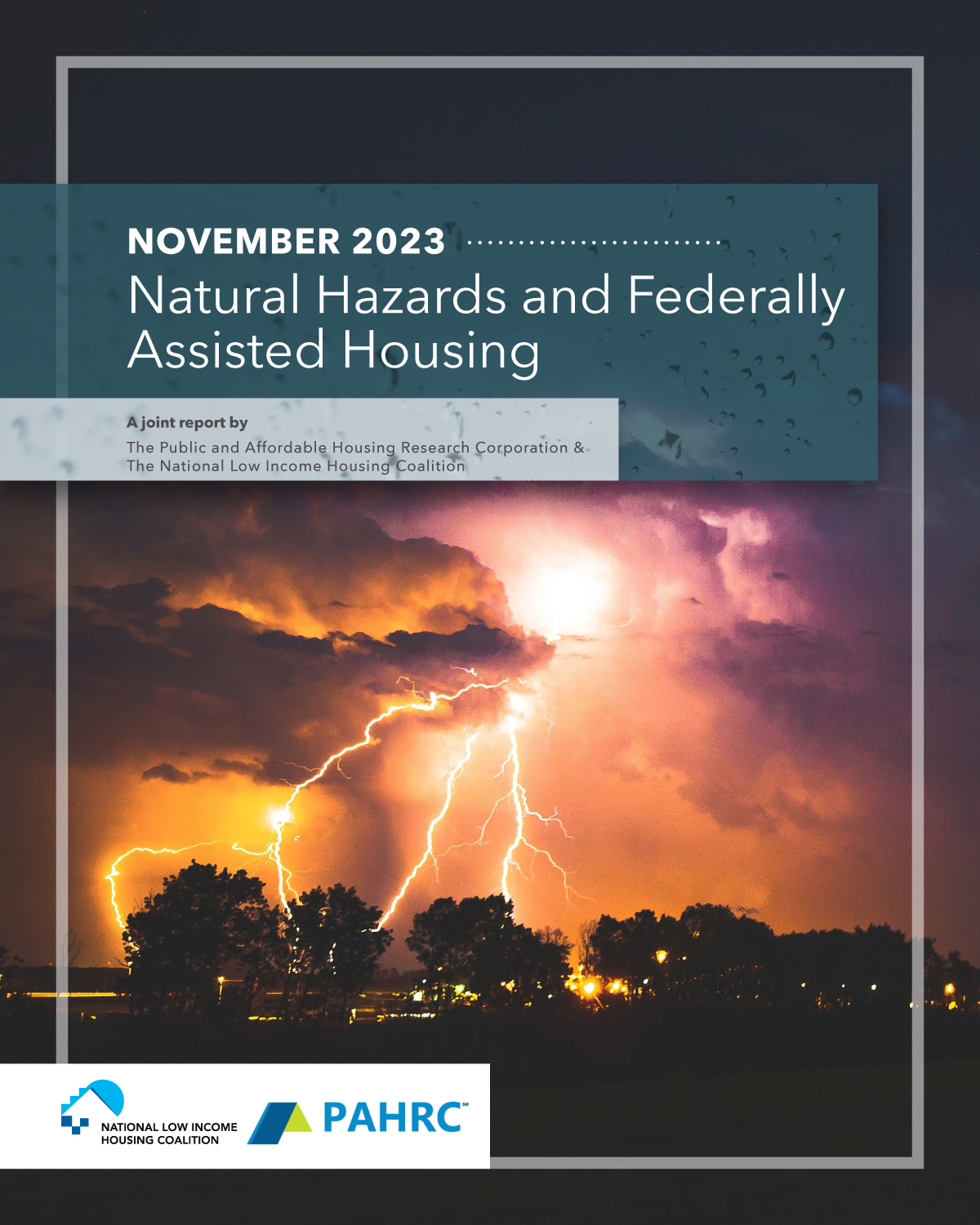NLIHC was founded on the principle that data-driven advocacy works. By conducting ongoing, rigorous, and timely research, we make clear the need to ensure housing for people with the lowest incomes and document effective solutions to the lack of affordable housing and housing stability. Please explore the tabs on this page, and contact us at [email protected] with any questions you may have about our research and data.
The Research Team
- Andrew Aurand, Senior Vice President for Research, [email protected]
- Dan Emmanuel, Director, Research, [email protected]
- Sarah Abdelhadi, Manager, State & Local Research, [email protected]
- Mackenzie Pish, Research Analyst, [email protected]
- Raquel Harati, Research Analyst, [email protected]
- Esther Colón-Bermúdez, Research Analyst, [email protected]
- Nada Hussein, Research Analyst, State and Local Innovation, [email protected]
-
Housing Needs and Affordability
NLIHC produces two annual reports that document the housing needs and affordability challenges faced by renters of different incomes and across different geographies.
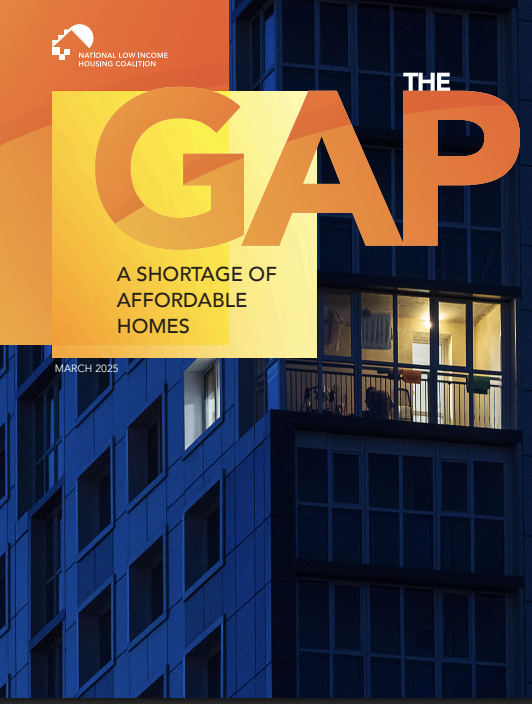
The Gap: A Shortage of Affordable Homes
The Gap measures the supply of affordable rental homes that are available to extremely low-income households and other income groups throughout the United States. The report highlights the stark shortage of homes affordable and available to people with extremely low incomes and the significant prevalence of housing cost burdens among them as a result. It provides estimates of the shortage for each state, the District of Columbia, and the largest metropolitan regions. Learn more and read The Gap: A Shortage of Affordable Homes.
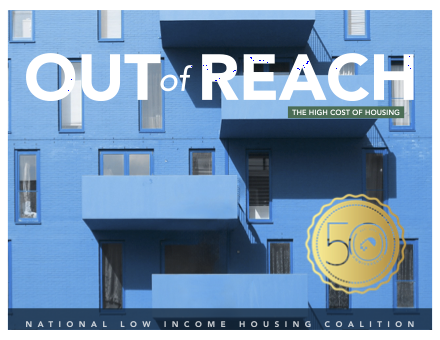
Out of Reach: The High Cost of Housing
Out of Reach highlights the disparity between the wages people earn and the cost of modest rental housing in the United States. The report shows that affordable rental homes are out of reach for millions of low-wage workers, seniors, people with disabilities, families with low incomes, and other renters. Out of Reach’s central statistic is the Housing Wage - an estimate of the hourly wage a full-time worker must earn to afford a modest rental home. Out of Reach provides Housing Wages for states, metropolitan areas, counties, the District of Columbia and Puerto Rico. Learn more and read Out of Reach.
County and Place Data
NLIHC calculates the supply of affordable rental housing and the prevalence of housing cost burdens by income for most counties and places in the U.S. These data are available by emailing [email protected].
-
Preservation of Affordable Housing
National Housing Preservation Database
In an effort to provide communities with the information they need to effectively preserve their stock of publicly assisted affordable housing, NLIHC created and manages the National Housing Preservation Database (NHPD) in partnership with the Public and Affordable Housing Research Corporation (PAHRC). The NHPD shows users the federal subsidies associated with nearly any federally assisted property, as well as other property characteristics, which is critical for identifying properties in need of preservation. Users such as tenants, organizers, advocates, mission-driven developers, policymakers, and planners can consult the database to identify specific properties in need of preservation or evaluate preservation challenges across an entire portfolio. Visit https://preservationdatabase.org/ to access the NHPD.
The NHPD is also a valuable resource for researchers wishing to study preservation and the federally assisted housing stock more generally. Read our preservation-related reports:Picture of Preservation (2024)
This joint report with the Public and Affordable Housing Research Corporation (PAHRC) analyzes data from the National Housing Preservation Database (NHPD) to assess the existing federally assisted housing stock and the specific preservation risks faced by these homes, including expiring affordability and eligibility restrictions, declining physical quality, and significant reductions in federal allocations. Mitigating these risks and preserving the existing federally assisted housing stock is essential to any effort to expand the supply of affordable housing for the lowest-income renters. Read the report.
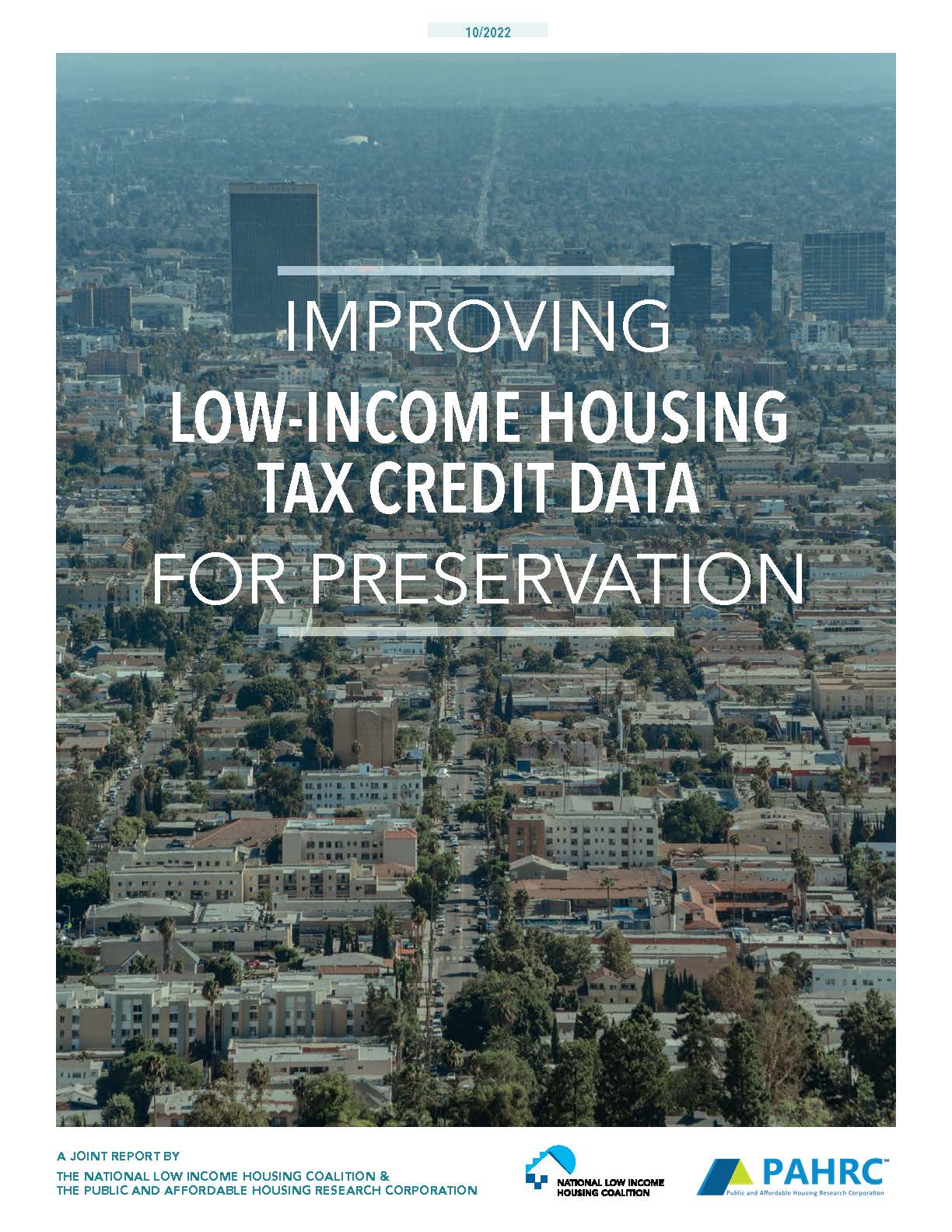
Improving Low-Income Housing Tax Credit Data for Preservation (2022)
The report documents the need for improvements to both the quality of property-level Low-Income Housing Tax Credit (LIHTC) data and public access to these data to aid the preservation of affordable housing. LIHTC data should be improved to support the identification of specific properties where preservation efforts are needed to protect tenants and to better understand the nature and scale of preservation risks facing the LIHTC stock. Read the report.

Picture of Preservation (2021)
The report highlights the need for more financial resources and stronger preservation protections to ensure the continued affordability and physical quality of the federally assisted housing stock. Historic investments in deeply targeted federal programs and strengthened preservation policies in the LIHTC program are especially needed. Read the report.
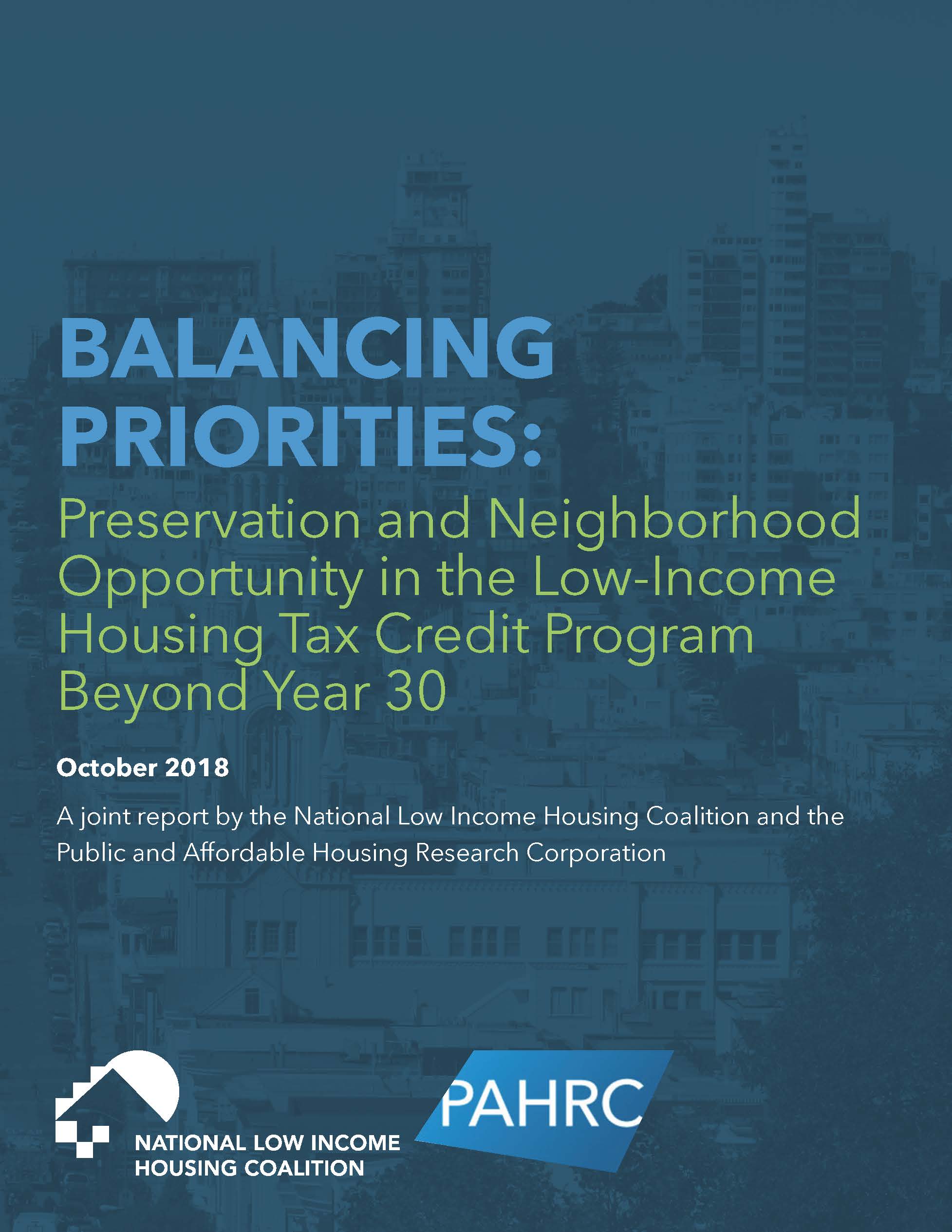
Balancing Priorities: Preservation and Neighborhood Opportunity in Low-Income Housing Tax Credit Program Beyond Year 30 (2018)
The Low-Income Housing Tax Credit (LIHTC) is the largest affordable housing program in the U.S. By 2030, nearly half a million current LIHTC units, or nearly a quarter of the total stock will reach the end of all federally mandated rent-affordability and income restrictions. Some of these units will be lost from the affordable housing supply as they convert to market-rate rents. Others may be lost to physical deterioration unless new capital investment is available for rehabilitation and renovation. This report sheds light on these preservation challenges with an examination of the neighborhood characteristics of these LIHTC units and a discussion of how scarce resources for affordable housing lead to a dilemma between the priorities of preserving affordable housing and promoting mobility for low-income families to higher-opportunity neighborhoods. The report addresses this dilemma by offering a broader vision for a housing safety net. Read the report.
-
Tenant Surveys
National Renter's Survey
Much of what is known about renters in the U.S. comes from national datasets like the American Housing Survey, Census Household Pulse Survey, and American Community Survey. While these resources provide considerable detail on topics like housing quality, rental costs, and renter demographics, they include only limited information on topics like landlord-tenant relationships, barriers to applying for housing assistance, rental junk fees, and challenges faced in obtaining accessible and inclusive housing. From 2024 to 2025, NLIHC will address this information gap by conducting a nationally representative survey of renters. The primary goal of this survey is to supplement existing data sources by gathering new, actionable, quantitative data to inform advocacy on federal policies that affect renters. Visit https://nlihc.org/national-renters-survey to follow the latest updates on the progress of the survey.
Maine Eviction Prevention Program Evaluation
NLIHC was chosen to evaluate Maine’s Eviction Prevention Program (EPP), which helps tenants in Maine who are behind on rent and at risk of eviction by paying for their late and future rent. NLIHC is surveying tenants who applied for the program to understand whether the rental assistance provided through the EPP helps Maine residents stay in their homes, lower their stress levels, and live healthier lives. To learn more, please visit https://nlihc.org/maine-epp-survey.
-
Hazards and Disasters
As the severity and frequency of natural hazards increase, a substantial body of research indicates that people of color and renters are disproportionately at risk. Meanwhile, federal funding to prepare for and recover from disasters tends to benefit economically advantaged white homeowners and their communities. NLIHC’s disaster-related research largely focuses on quantifying the risks natural hazards pose to low-cost and subsidized rental housing and long-term recovery outcomes following disasters. NLIHC also convenes a disaster & housing recovery research consortium that brings together researchers from academia and non-profit organizations from around the country to discuss emerging research and data issues related to housing and disaster recovery.
Read our reports related to hazards and disasters: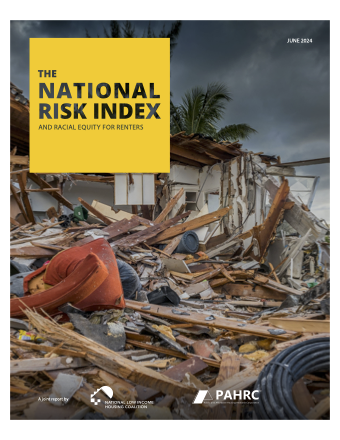
The National Risk Index and Racial Equity for Renters (2024)
This report assesses whether the Federal Emergency Management Agency's (FEMA) National Risk Index (NRI) reflects known disparities in natural hazard risk for renters of color. The report concludes that the NRI may insufficiently capture racial and ethnic disparities in risk within states for renters, particularly for Black and Hispanics renter households. For this reason, the report urges caution in the use of the index when allocating mitigation and recovery planning resources for renters. Read the report.
Natural Hazards and Federally Assisted Housing (2023)
The report analyzes the risks posed by natural hazards to federally assisted housing and its residents using the Federal Emergency Management Agency’s (FEMA) National Risk Index (NRI). Among other findings, the report reveals that nearly a quarter of federally assisted homes are in census tracts with the greatest risk of negative impacts from natural hazards, and that heat waves are the most prevalent natural hazard threatening residents of federally assisted homes. Read the report.
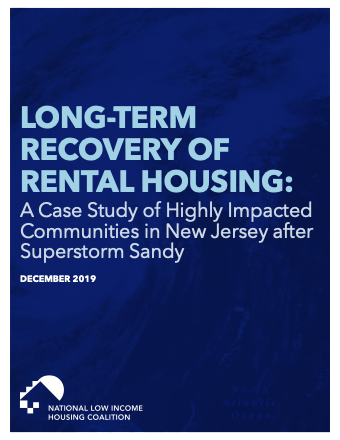
Long-Term Recovery of Rental Housing: A Case Study of Highly Impacted Communities in New Jersey after Superstorm Sandy (2019)
The report shows a loss of low-income rentals and gentrification in heavily impacted communities. Interviews conducted by NLIHC for this study highlight the limited targeting of recovery funds for renters with the lowest incomes, the long recovery time needed for multifamily housing, and potential challenges in recovery for small landlords. Read the report.
-
Rental Housing Programs and Policies
NLIHC publishes research on how rental housing programs and policies serve households with extremely low incomes. For example, NLIHC created a database of state-funded and large city-funded rental housing programs, conducted significant research on how emergency rental assistance could reach renters most in need during the pandemic, and continues to study other affordable housing programs and policies like the role of Housing Choice Vouchers in the Low-Income Housing Tax Credit program.
Rental Housing Programs Database
NLIHC created the Rental Housing Programs Database (RHPD) to generate a better understanding of the diverse ways in which state and local governments use their own financial resources to close the gap between available federal funding for rental housing and the unmet needs of renters in their communities. The RHPD captures information on state and locally funded programs that create, preserve, or increase access to affordable rental housing; it includes program goals, target populations, tenant eligibility requirements, and other program characteristics. You can read a summary of findings from the 2023 RHPD update in our report, State and Local Investments in Rental Housing.
Emergency Rental Assistance
NLIHC and its research partners produced multiple reports about emergency rental assistance (ERA) programs designed and implemented in response to the COVID-19 pandemic. The variation of features like subsidy structure, application accessibility, documentation requirements, and outreach, across ERA programs provide lessons for the future.
- Learning from a Crisis: Strategies to Increase Flexibilities in Housing Choice Voucher Implementation (2024): The Housing Choice Voucher (HCV) program currently assists over two million households. However, renters face challenges in both accessing and using HCVs due to scarcity of resources, burdensome requirements, uninterested landlords, and racial discrimination. Learning from and incorporating flexibilities from pandemic-era initiatives, such as ERA, the Emergency Housing Voucher program, and waivers authorized under the Coronavirus Aid, Relief, and Economic Security Act, into the HCV program could allow public housing agencies to address these challenges, improving access to and utilization of the program.
- Beyond Housing Stability: Understanding Tenant and Landlord Experiences and the Impact of Emergency Rental Assistance (2023): NLIHC, the Housing Initiative at Penn, and the Reinvestment Fund released a joint report on tenant and landlord experiences with the U.S. Department of the Treasury’s ERA Program. The report finds that Treasury’s ERA program offered a vital lifeline to tenants and landlords during the pandemic, improving outcomes in areas beyond housing stability, including financial security, child well-being, access to healthcare, and overall health. The report provides suggestions for future housing stability programs as well as policy recommendations.
- Emergency Rental Assistance during the Pandemic: Implications for the Design of Permanent ERA Programs (2022): The report examines a broad range of ERA programs and provides lessons that would be useful in future efforts to establish a permanent ERA program.
Click here for additional reports on the implementation of ERA.
Other Reports about Housing Programs and Policies
- The Role of Vouchers in the Low-Income Housing Tax Credit Program (2024): The Housing Choice Voucher (HCV) program was originally intended for use in the private market, but a subset of HCVs is used for affordable housing units financed through the Low-Income Housing Tax Credit (LIHTC) program. This article examines the relationship between these programs, which are two of the most significant federal sources of affordable housing funding. It provides background information on each program, reviews what is known about their relationship, and identifies areas for data improvements and future research that can inform federal policymaking.
- Aligning Federal Low Income Housing Programs with Housing Need (2014): NLIHC undertook the Alignment Project to gain a better understanding of how existing federal housing resources are being used and to learn how those existing resources might be better aligned with the need for housing among ELI households. A series of research reports and policy recommendations were produced from the Alignment Project.
